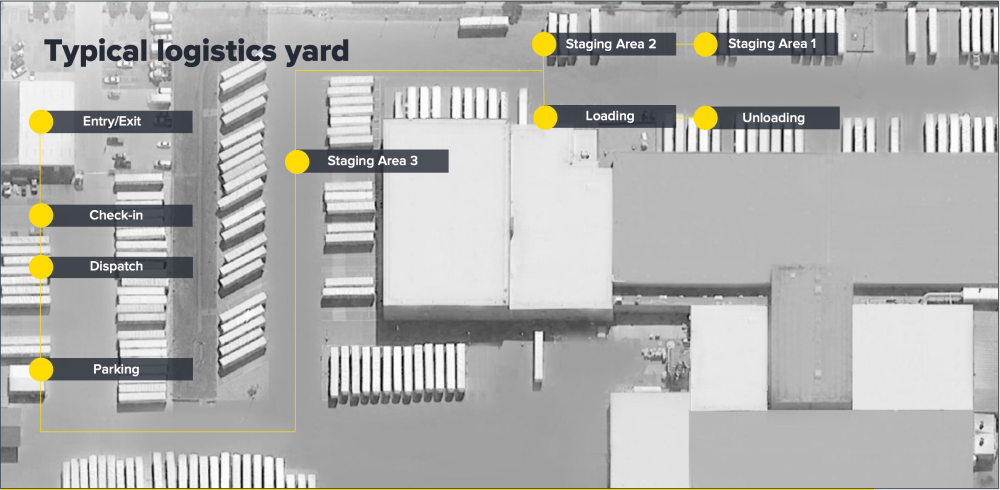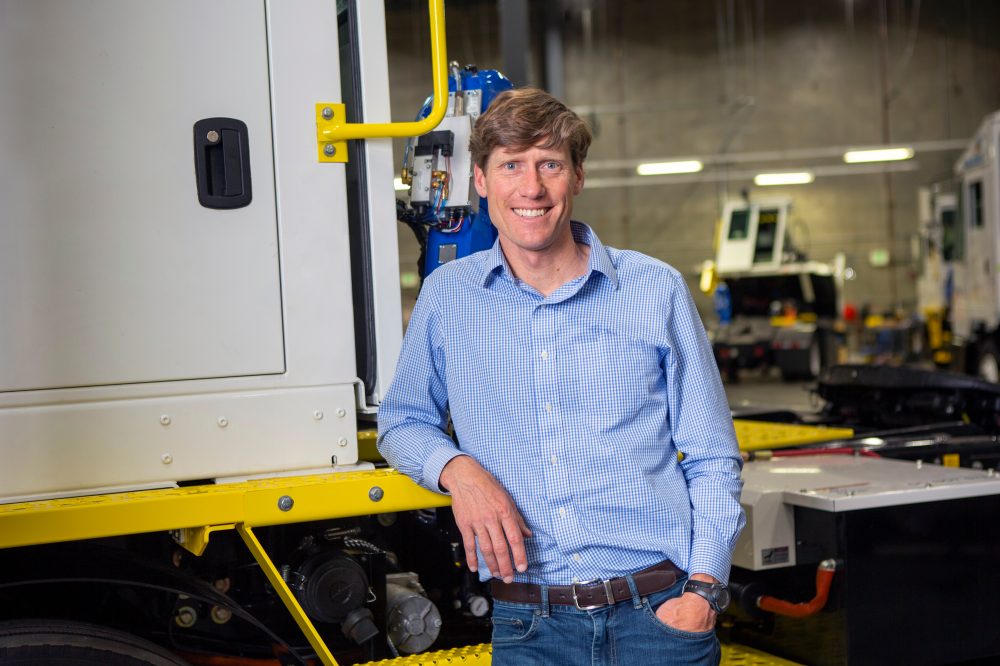
Roughly 10 billion tons of freight move through supply chains in the US each year, almost all of which pass through distribution yards – the area of the supply chain between the warehouse and the open road. Andrew Smith, Outrider founder and CEO, has dedicated his career to the commercialization of environmental technologies. He spoke with Electrek about how the automation of electric yard trucks is not only dramatically increasing the sustainability of this often-overlooked area of the supply chain, but also the agility and reliability of its movement of goods.

Electrek: What is a distribution yard, how many are there in the US, and why do we need to focus on them in order to reduce emissions?
Andrew Smith: While we are familiar with warehouse automation, we’re less familiar with what occurs outside the warehouse doors. Distribution yards, one of the most underinvested parts of the supply chain for decades, are finally receiving the attention they deserve – in large part highlighted by the ongoing supply chain disruptions. Yards play an important role in ensuring goods move smoothly between the warehouse and over-the-road (OTR) trucks.
For a sense of scale, roughly 10 billion tons of freight moves through the US each year, and just about all of that passes through logistics hubs. Distribution yards are chaotic environments rife with repetitive, manual tasks that are often performed in hazardous working conditions. Roughly 50,000 diesel yard trucks shuttle trailers back and forth between loading docks and parking spots within distribution yards on a daily basis.
Every year in North America, these yard trucks emit 3.8 million metric tons of carbon dioxide – the equivalent of one coal-fired power plant. Plus, OTR trucks, or semi-trucks, keep their engines running while they wait up to four hours at distribution centers to drop and pick up their next load. Combined, yard trucks and semi-trucks in distribution yards emit more carbon dioxide than two coal-fired power plants annually.
As enterprises implement automation in distribution yards, it’s imperative to consider how it can be done more sustainably, safely, and efficiently. This led to Outrider’s decision to standardize its autonomous system on electric yard trucks, which in time, will replace diesel yard trucks.
Electrek: Who are the players that benefit from distribution yard automation, and what steps do they need to take, individually and in collaboration, to get emissions to net zero?
Andrew Smith: Logistics-heavy enterprises, like those in retail, consumer packaged goods, and package delivery, benefit from yard automation by decreasing truck turn time, lowering the risk of equipment damage and injuries, and reducing their carbon footprint.
Large enterprises can take several steps toward a net zero-emission future, first by standardizing their yard truck fleets on electric vehicles. Second, these companies can leverage automation to get OTR trucks in and out of the distribution yard more efficiently. If automation makes yards even slightly more efficient, say by as little as five to 10 minutes, OTR turn time increases, putting more than 1 million days and roughly 247 million gallons of diesel fuel to better use moving freight. Lastly, [you have] design distribution centers and yards that are ready to deploy electric, autonomous yard operations.
Electrek: What sort of technology and electric vehicles are currently available that could be implemented to accelerate sustainability in distribution yards? And what does your company, Outrider, do?
Andrew Smith: Within the supply chain, yard automation presents a significant opportunity to increase efficiency, improve safety, and drive sustainability by way of reducing emissions. Outrider’s goal is to work with customers and suppliers to rapidly retire diesel-burning yard trucks and standardize on zero-emission, autonomous yard truck fleets. Autonomous and electric go hand-in-hand. Autonomous yard trucks have advanced electronics that require clean, reliable power that a fully electric drive provides — and these trucks can effortlessly be dispatched to recharge during low utilization periods. Furthermore, enterprises with electric yard truck fleets will eliminate the need for on-site refueling infrastructure.
Founded in 2017, Outrider is the pioneer in autonomous yard operations for logistics hubs, helping large enterprises improve safety and increase efficiency. The Outrider System consists of three integrated parts — management software, autonomous vehicles, and site infrastructure — to move trailers between loading docks and parking spots. Using proprietary autonomy technology, the Outrider System hitches and un-hitches trailers, robotically connects and disconnects trailer brake lines, interacts with loading docks, tracks trailer locations, and centrally manages and monitors all system functions.
Electrek: What technology still needs to be developed that distribution yards will need to accelerate sustainability?
Andrew Smith: Outrider’s goal is to make yard operations more efficient, safe, and sustainable by fully automating the repetitive, manual tasks. Long-term, there is immense opportunity to apply our autonomous technology – all built on electric platforms – to logistics hubs, warehouses, intermodal terminals, and factories. The more applications for electric, autonomous systems throughout the supply chain, the faster we can make logistics more sustainable.
Near term, there are three areas related to autonomy that will help accelerate sustainability: technology, infrastructure, and cost. On the technology front, sensor advancement will help autonomous systems perform better in extreme weather conditions, allowing them to be deployed in even more geographic regions. Related to infrastructure, enterprises and logistics real estate firms need to make sure the distribution center has adequate charging and communications infrastructure to support electric, autonomous yard operations. On a final note, the cost of EVs will continue to come down, particularly the batteries, as competition and innovation in the market continue to accelerate.
Andrew Smith is the founder and CEO of Outrider, a pioneer in autonomous yard operations for logistics hubs. He is committed to the rapid commercialization of sustainable freight transportation by deploying zero-emission systems. Under his leadership, Outrider has grown from a concept to a yard automation solution for some of the biggest companies in the world.

Prior to Outrider, Andrew was founder and CEO of ATDynamics Inc., an Inc. Magazine Top 500 Fastest Growing Private Companies in America nominee. At ATDynamics, Andrew redefined the shape of the modern semi-trailer with TrailerTails®, rear-drag aerodynamic devices capable of reducing trucking industry fuel consumption by over $2 billion annually.
Andrew holds a physics degree from Middlebury College and an MBA from the Tuck School of Business at Dartmouth.
Photo: Outrider
Subscribe to Electrek on YouTube for exclusive videos and subscribe to the podcast.
Author: Michelle Lewis
Source: Electrek



